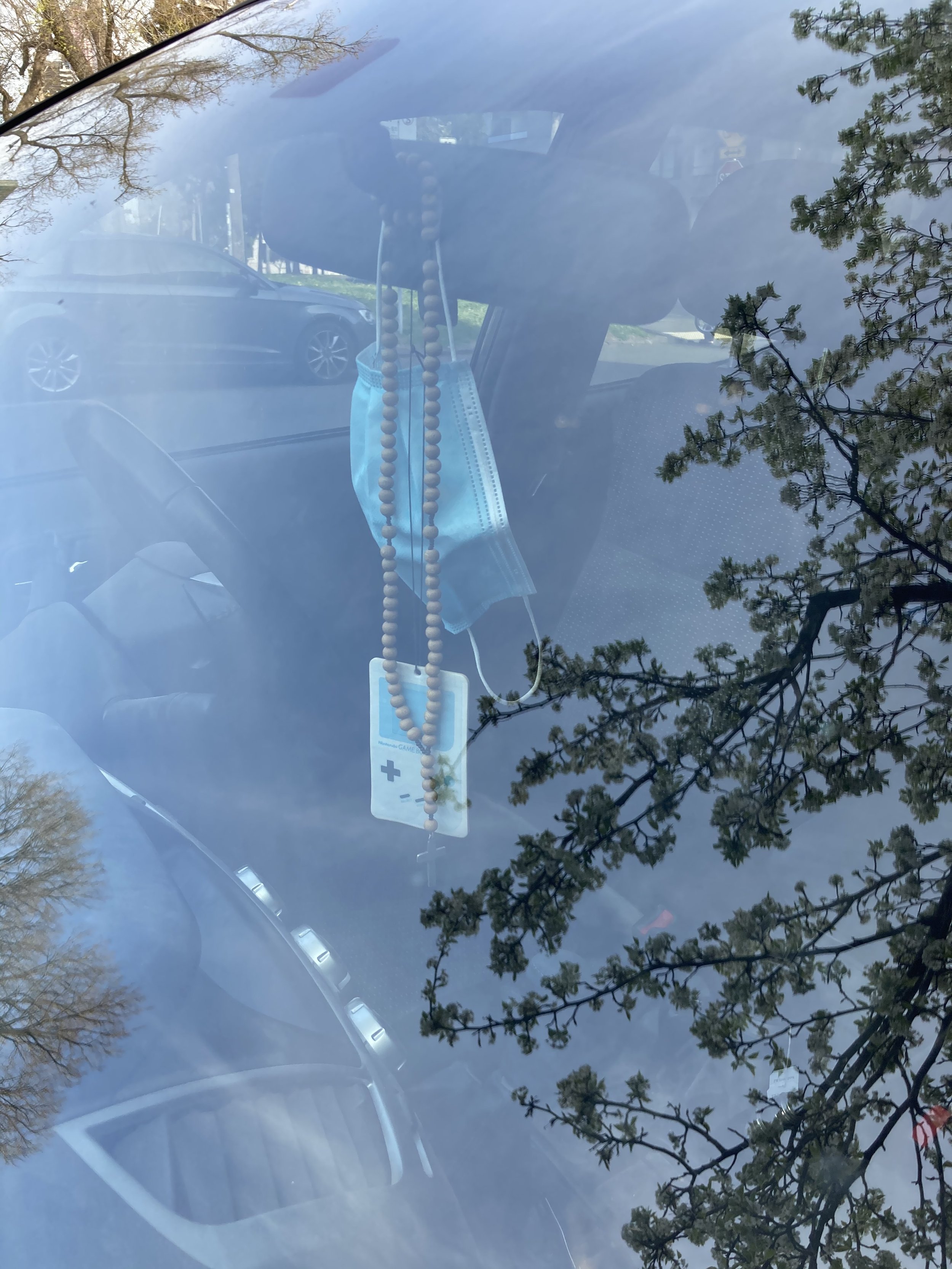The land where large fuzzy dice still hang proudly
In the late 90s I found myself listening to Cake’s Race Car Ya-Yas on repeat. I was a teenager, increasingly ostracised due to my love of study and art and frustrated by the ways my body, on the cusp of puberty, marked me as a woman locking me out of the most celebrated aspects of rural public life. I had always participated but suddenly under the weight of peer pressure I found myself forced into the role of a spectator – cheering the boys playing Australian rules football from the sidelines, sitting in the backseat of some lad’s car admiring the decal he had purchased and stuck across his back window: ‘The Rat’ it said in hot-rod cursive. The line in the song that I connected with the most was ‘the land where you can’t change lanes’ which seemed to perfectly articulate the rigid gender and cultural norms I felt so restricted by. However, I also loved: ‘The land where large fuzzy dice still hang proudly like testicles from rear view mirrors’. It was satisfying because it gave me the licence to say testicles in public, but also because it captured the way young men in my hometown used auto adornments - from fluffy dice and decals to racing stripes and seat covers - to express their masculinity.
Outside the youth culture I was navigating, little scented trees swung mesmerizingly from most rear-view mirrors, filling the vehicle with the odour of pine (and later many other scents). In fact, they were so common there was a part of me that felt my family might go under the radar, fit in, if we purchased one. That was until 1996 when I saw Seven at the cinema, a psychological crime thriller where two detectives try to apprehend a serial killer who uses the seven deadly sins as a motif. When they burst into the ‘sloth’ murder scene, hundreds of scented little trees adorned the ceiling to conceal the odour of the killer’s latest victim - strapped to the bed, starved and tortured to the point of near death. Just as the police move close to the body, he takes a sudden rasping breath. The whole theatre jumped in unison when it happened, a woman screamed and two teenagers stood up, declared they had had enough and briskly left the cinema trickling popcorn behind them. 20 years later the sight of dangling pine trees still pulsates between terror and childhood nostalgia.
When I moved to Melbourne and went to Art School in the early 2000s, I found my people. On the road, the ability to find your place in the diversity and scale of the city was symbolised by the variety of things that hung from rear view mirrors. Yes, I saw the scented pine trees and fluffy dice, but they were joined by just as many bright red Chinese lucky knots, rosary beads with heavy black crosses, macramé held crystals, mirror balls, playboy bunnies, Ik Onkar Sikh symbols, golden charms with Allah inscribed across them, dream catchers and a dazzling array of miniature soft toys some with googly eyes that jiggled to the rhythm of the car. Once I even saw a duck sitting on a swing wearing a broad-brim hat and sunglasses. It was summer and there was a blinding western sun piercing the windscreens of the oncoming traffic. It seemed appropriately sun smart as it swung to the cadence of its inching, peak-hour vehicle.
60s and 70s Australia was a far less culturally diverse place. Restrictive and racist immigration policies controlled the cultural background of those that moved here. One night, as I described the diversity of Melbourne’s rear view mirror curiosities to my father, he reflected on the predictable terrain of adornments during his adolescent and university days. Back then the most common was a necktie, pre-knotted and ready to be slipped on quickly should the driver find themselves at a venue with a strict dress code. Cars were not particularly well sealed and Australian towns and cities were crisscrossed with dirt roads as urban planners struggled to keep up with the rapid pace of post Second World War population growth, so you’d pull up at a club to find a man beating the dust out of a necktie or trying to flatten it against his chest as he fought the way the Australian sun corroded polyester.
During the pandemic I walked the streets of locked-down Melbourne daily. As I walked, I thought about those neckties as the demands of pandemic dress codes saw the sudden appearance of a new ornament – the face mask. Dangling from an ear strap they cast shadows across the faces of drivers, twirled in the breeze of air-conditioners and blocked my vision of the trinkets that symbolise the rich and diverse personality of this city. One day, coffee in hand, after over 200 days in lockdown I was brought back to that song by Cake. There was a line of cars stuck at roadworks edging along a single lane including a polished white Hilux with a decal of Australia’s most infamous bushranger Ned Kelly on its back window. The morning sun was cutting through its windscreen creating a silhouette effect. As I absorbed the scene, complete with swaying face mask, I saw the driver reach up and remove the mask from the mirror revealing a perfect set of pendulous fluffy dice. ‘The land where large fuzzy dice still hang proudly like testicles from rear view mirrors’ I said to no one in particular.
